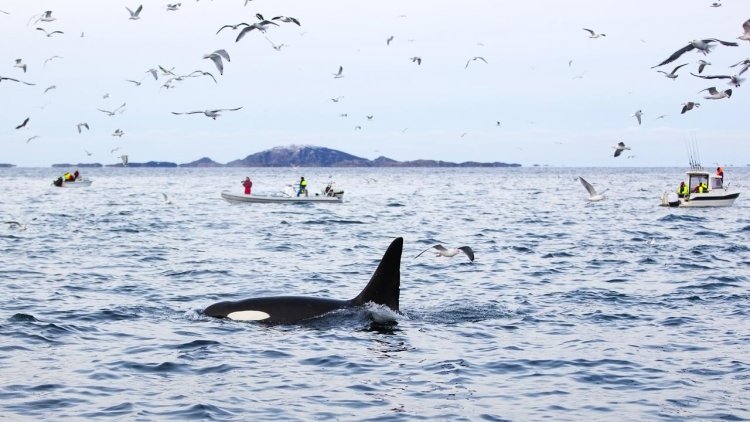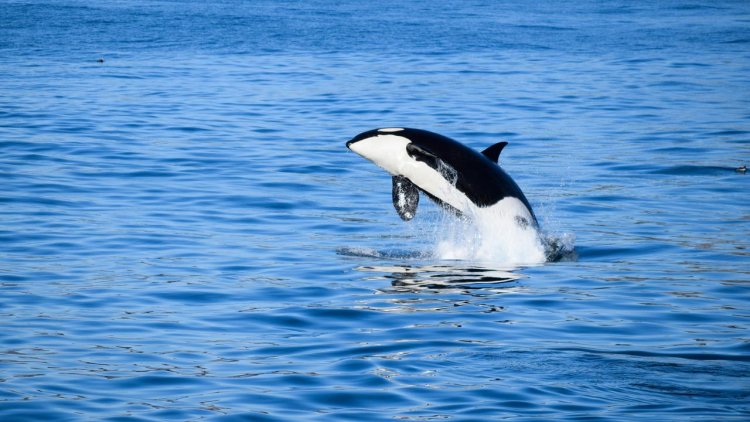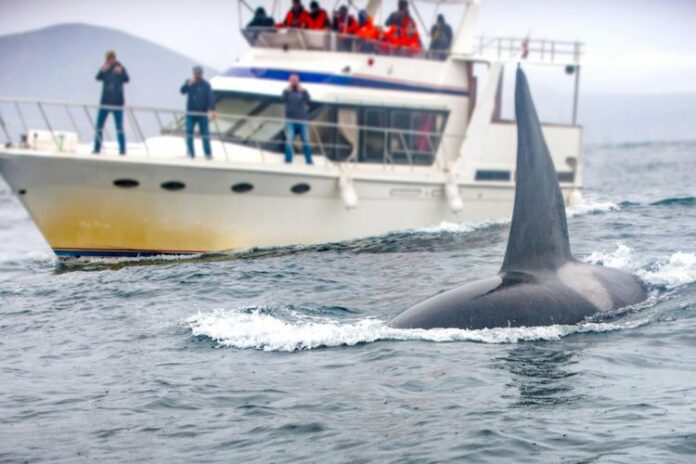The research, gathered by attaching suction-cup electronic tags to the whales, is a clear wake-up call to the protection endangered mother orcas need, researchers and experts say.
Marla Holt, lead author on the study, and a research wildlife biologist at the National Oceanic and Atmospheric Administration’s Northwest Fisheries Science Center in Seattle, said:
“Anything that takes food away from a mom trying to support a calf, that is something we should carefully consider. We need females to produce calves if we want to move toward population recovery.”
NOAA declared the southern resident orcas in 2015 a Species in the Spotlight, an initiative to bring more attention to the most endangered marine species in the U.S. These latest findings, published Tuesday in Frontiers in Marine Science, are expected to help the agency align its guidelines for whale watching with rules already in place in British Columbia and the state of Washington to be more protective of southern resident mother orcas and their calves.
The Washington Fish and Wildlife Commission recently adopted new rules that forbid commercial whale watching of a southern resident calf up to 1 year old, among other restrictions.
In Canada, whale watch tour operators have agreed to not offer or promote tours of southern resident orcas.
But NOAA has yet to update its own regulations, which are less protective than either the state or Canada. Boaters meanwhile are encountering a confusing three-way regulatory regime of a critically vulnerable species that goes back and forth across the border. Enforcement on the water is also crucial to the effectiveness of the rules.

The new findings on vessel disturbance build on earlier field work that used temporary tags attached to southern resident orcas with suction cups.
The tags record the whales’ movements and allow scientists to observe the orcas’ lives underwater, as they dive, swim and pursue prey. It is those findings that revealed that male and female orcas alike change their behavior when vessels come close—females more than males.
Females will either stop foraging if they are, or not initiate foraging dives.
Just why females are more vulnerable is not exactly known. They have smaller bodies and don’t have the same capacity as males for extended dives. Mothers with calves also stay with their young, and therefore are restricted by the baby’s physical limits to shallower waters, closer to shore. Males are more typically seen in deeper water, foraging alone.
Even kayaks cause disturbance. The reason is the complex maneuvers orcas need to undertake to successfully hunt prey, which involves reconnaissance at the surface, exploration, then the actual deep, foraging dive to nail a fleeing salmon, all using echolocation, or biosonar, to “see” in the dark depths.
Female orcas also share their prey, usually at the surface. Noise by vessels or the presence of even kayaks at the surface where the orcas need to come up to breathe and to share prey all can hinder crucial prey capture and sharing. The effect is most concerning in pregnant and nursing mother orcas, whose nutritional needs are greatest.
Lactation takes more calories than any other activity, and orca moms typically nurse their baby for at least a year. The baby will depend on her for food as long as three years as it learns to hunt. Adult male offspring also often are partly provisioned by their mothers, so the females’ hunting success is crucial to the entire family.

Jennifer Tennessen, a research scientist at NOAA’s Northwest Science Center and another author on the paper, said:
“There is the potential for mothers to be more vulnerable to disturbance due to this need to be with the calves, they need more prime opportunities to forage. If vessels are close, it may be that it is not worth it, you just wait until conditions are better.”
The orcas are challenged not only by vessel noise, but also pollution and scarce chinook, their preferred prey. A new Washington state report shows Puget Sound chinook are in crisis, as their numbers continue to dwindle, making the orcas work harder than ever to get enough to eat.
There are only 74 southern residents left in a population unique in the world in its culture and affinity for the waters of Puget Sound. They need salmon to survive—and quiet water in which to hunt them. Time is running out for the salmon orcas need and the southern residents that hunt them.
But recent good news from up north also shows when conditions improve, orcas take notice.
Scientists were thrilled earlier when members of some of the northern resident families they had not seen in decades were documented in waters the families had fled, when a local fish farm turned on electronic pingers to scare away seals.
The pingers were turned off long ago, after the B.C. government banned their use. The fish farm was dismantled last year. Then, this winter, the orca families so long absent from Fife Sound, came back. They brought a newborn with them.



